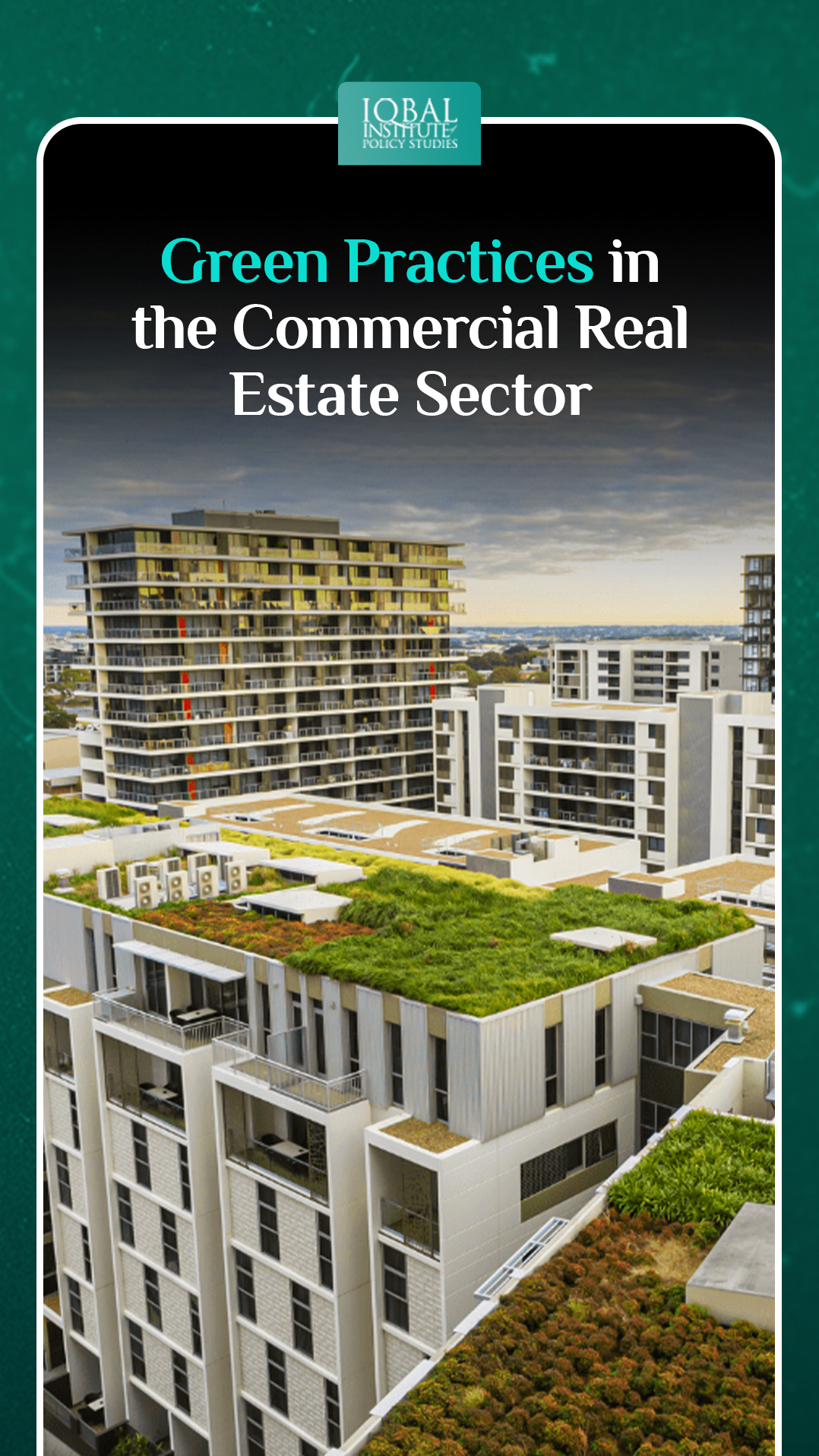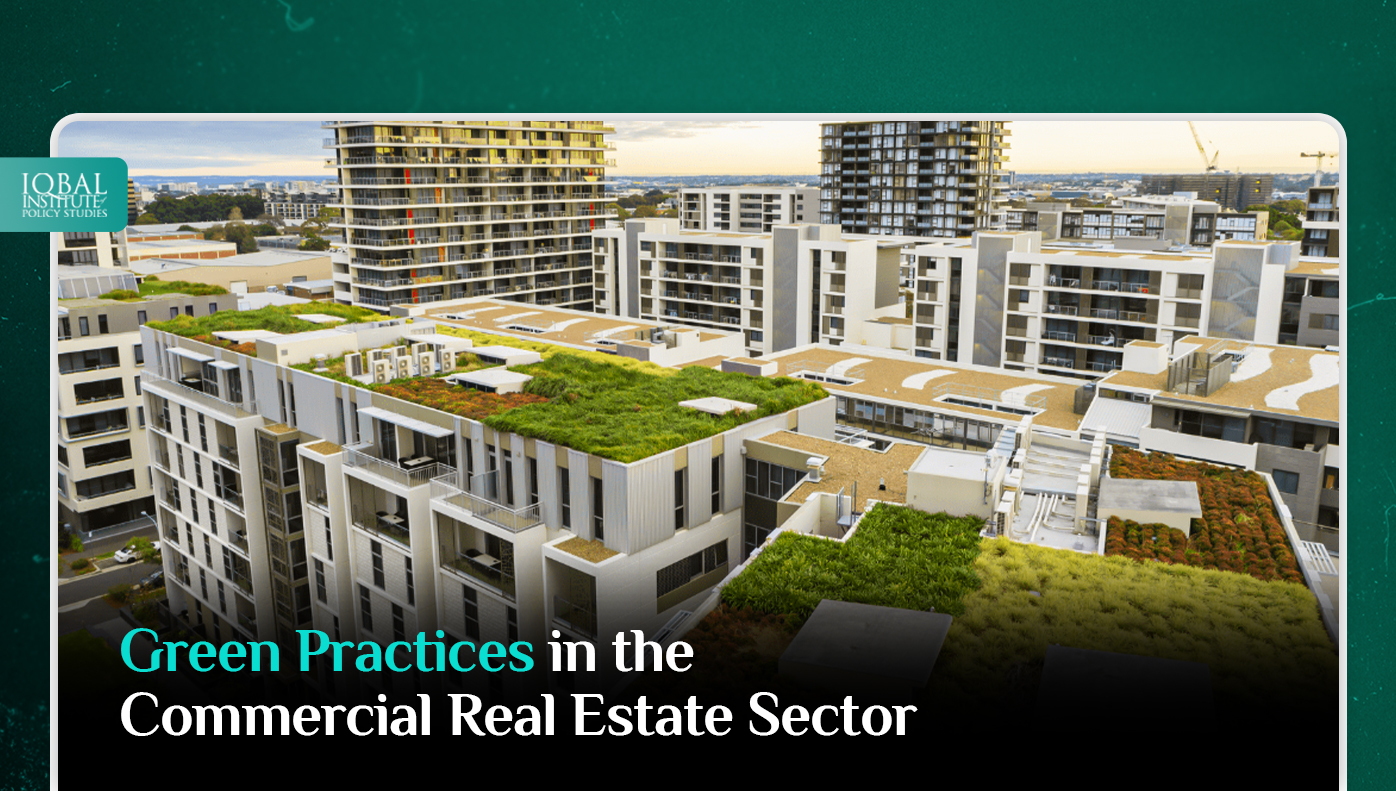The idea of sustainability, green practices, and net zero-carbon buildings is not new. However, it is gaining momentum and popularity amid the global climate crisis. The adverse climate changes are increasing the demand for green industries and societies among the people. As a result, sustainable construction and renovation have gone conventional. Today, the global trend of green practices is not limited to homes only but is making its way to commercial real estate as well. Since the building sector is responsible for 38% of greenhouse emissions, commercial real estate owners are keen to embrace sustainability (Neil, 2020). Green buildings are coming up as big winners as they attract clients and investments, leading to huge profits. Moreover, the larger pool of clients in the real estate sector consists of a younger generation who are environmentally conscious. As a result, commercial real estate owners are focusing on projects having environmentally sustainable features which will more likely stand out. The commercial real estate industry of Pakistan is booming its economy. However, it is focusing more on traditional growth rather than experimenting with mainstream concepts like green practices. Due to the ongoing climate crisis in the country, people are now focusing on and demanding green developments. Therefore, the commercial real estate sector must go green. It will not only contribute toward environmental preservation but also save the county’s depleting natural resources.
Why does Pakistan’s Commercial Real Estate Need to go Eco-Sustainable?
Global Warming is no longer a threat but a reality for Pakistan. The radical shifts in climate have caused massive floods in different regions of the country, leading to housing shortages, water scarcity, and energy crises. As a result, agriculture-related activities, food production, and livelihoods are severely affected. More than 50,000 houses, 3000 kilometres of road, 42 shops, and 119 bridges have been destroyed (relief web, 2022). Moreover, 39% of the population is experiencing multidimensional poverty (relief web, 2021). In addition to that, Pakistan’s real estate sector is growing at a rapid pace. The annual energy consumption of the real estate sector is 40% of the total global energy and accounts for approximately 20% of greenhouse gas emissions worldwide (Graana Blog, 2022). It is worsening the environmental crisis in the country. Illegal housing schemes, horizontal development, and expansion of cities are overtaking green belts, agricultural lands, and forests. As a result, the increasing land surface temperature and carbon emissions aggravate climate change. Moreover, there are 20 000 brick kilns in Pakistan which emit 53,3019 tons of untreated greenhouse gases annually (secretariat, 2018). Consequently, it leads to atmospheric warming and increases the melting rate threatening the glaciers and ice caps in the north. As global warming is a contemporary issue, people are now more informed and aware of the ongoing crisis in the country. They are demanding a long-term solution from all the socio-economic sectors. Since the real estate sector is one of the largest industries in the country, it will have to adopt green practices sooner or later. Eco-Sustainable developments are crucial for the country to minimise the menacing threats of global warming, and if the real estate sector wishes to progress, it must go green, catering to the growing demands.
What are Green Practices?
Green Practices are the future of sustainable living. It involves the designing of buildings and infrastructures by implementing processes that are environmentally friendly and uses resources efficiently. Moreover, the initiation, construction, renovation, maintenance, and deconstruction of buildings are executed in a way that preserves the environment and limits the carbon emissions in the atmosphere.
Benefits of Green Practices in the Commercial Real Estate Sector
Cost Efficient
Green buildings are constructed with unique resource-efficient features that help save water and energy. The operating and maintenance costs of a traditional building are much higher. Even though constructing a green building may be slightly more expensive than their non-green counterparts, the reduced operation and maintenance costs of green buildings make them much cheaper in the long term.
Saves Energy
The commercial real estate sector requires a lot of resources for its operation and maintenance. Therefore, green practices reduce the dependency on energy sources by generating energy from renewable sources such as wind and sunlight. Moreover, the buildings are constructed in a manner that uses energy efficiently, such as the use of large windows for natural light and durable seals to prevent energy leakages.
Environmental Sustainability
Green practices use clean and sustainable materials in the construction and development process. As a result, fewer toxins and carbon emissions are released into the atmosphere. It not only ensures environmental sustainability but also helps lessen the pace of climate change.
Attract Customers and Investors
People are demanding eco-sustainable developments from their leaders. As a result, countries are working towards green development efficiently. The introduction of green practices in commercial real estate will attract not only environment-conscious customers but also allure foreign investments.
Increase Property Value
Green commercial buildings have low utility costs and are energy and resource-efficient. As a result, they will stand out from the competitors in the growing real estate market. Green and sustainable practices will make the property more marketable. Therefore, it will not only increase its demand but also increase the property value.
Job Opportunities
Transforming the traditional commercial real estate sector into a green commercial real estate sector will create a positive image of the country on the world stage. It will not only attract investments from developed countries but also create job opportunities for the massive unemployed workforce in the country.
What are the Challenges?
Lack of Awareness
60 million people in Pakistan are illiterate (Mail, 2022). They have limited to no knowledge about green practices, their significance, and their requirement in the real estate sector. Educating people about climate change and the need for better sustainable choices will require a lot of resources. Moreover, changing the industry mindset to switch from traditional construction to green buildings may be a slow process.
Lack of Experienced Labor
The commercial real estate industry needs immense training and education to understand and learn the required skills about green libraries and practices, paperless environment, space management, solar panels, glass windows, skills regarding the use of renewable energy sources, and the ability to find out the environmental impact of a resource. To achieve that, the government will need foreign investments as its economy is at default.
Lack of Green Policies
The traditional economic models in Pakistan need to be reformed to address climate change, biodiversity losses, water scarcity, etc., while at the same time addressing the social and economic challenges. However, Pakistan lacks the necessary green economic policies which could be implemented to achieve environmental sustainability. The reason for this is the lack of government involvement and coordination with the social and economic sectors.
Expensive
The commercial real estate sector in Pakistan is mostly profit based and not demand-driven. As green buildings cost much higher than traditional buildings, the owners may not invest and experiment with such projects. Moreover, the competition is increasing in the commercial real estate sector of the country. As a result, developers try to make cost-efficient projects to attract customers and investors.
The Way Forward
The government should formulate a body of experts and think tanks who can work towards the formulation of effective green policies. Moreover, strict implementation of adopting and executing green practices in all socio-economic sectors must be ensured.
The owners of commercial real estate sectors should take responsibility for making eco-sustainable choices. It will not only provide them with monetary benefits but also help lessen the pace of climate change. Moreover, this sector should cooperate with the government in making green policies to ensure their efficient implementation.
Awareness and education programs regarding green practices in the commercial real estate sector will help real estate owners become aware of the steps they take and their impact on the environment.
Conclusion
The green transformation of Pakistan’s commercial real estate industry is good for both the business and the community. The government alone cannot bring a sustainable change in society. The real estate sector should take the matter into its own hands by implementing and prioritising sustainable features to positively impact the environment and stand out to future investors, buyers and businesses. It will aid the business on the commercial front and take the industry’s reputation to the next level. Moreover, green practices are a crucial need amid the menacing threats of global warming. It can help the country come out of its energy crisis and lessen the ominous impact of climate change.



Leave a Reply